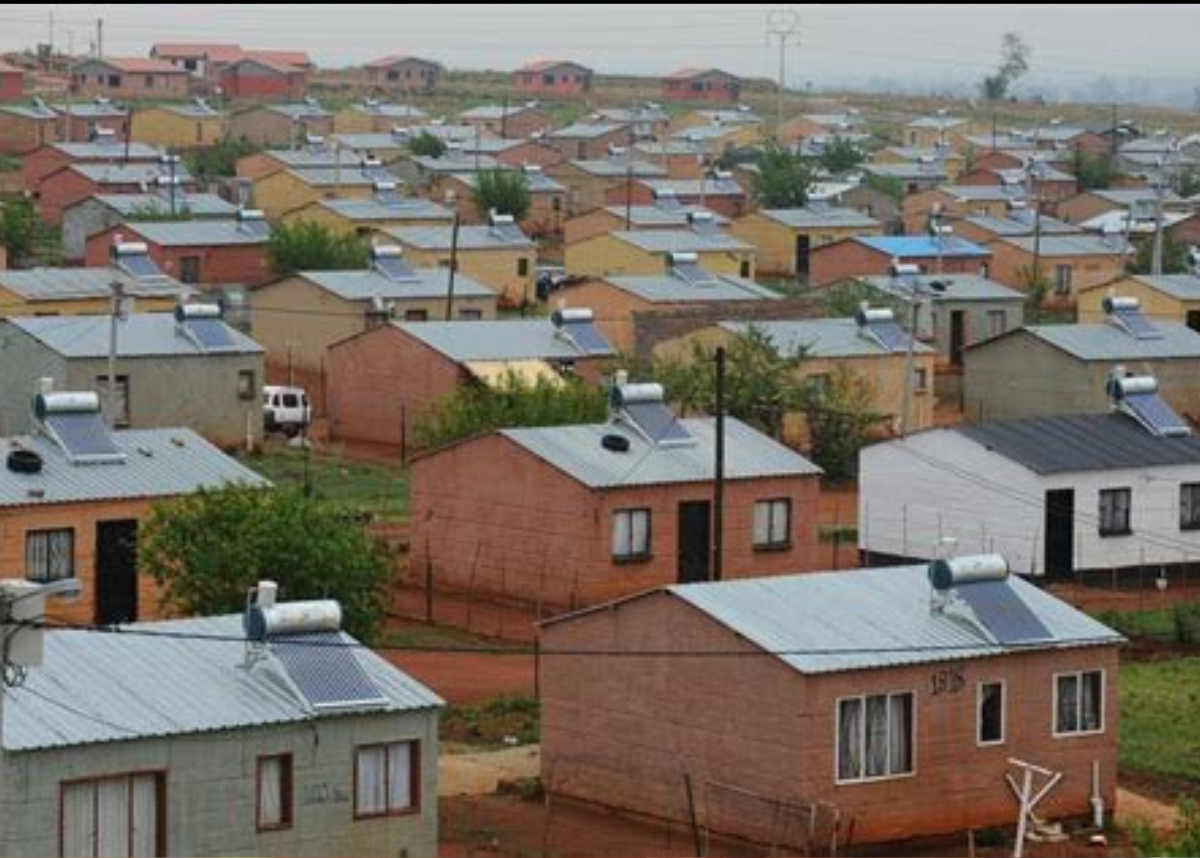Shelter is a basic need and is critical for human survival. A key reason for this is to protect ourselves from the elements of nature and its effects on our health. This is beside the need for adequate comfort which is important for physical and mental well-being.
In South Africa, housing has always been lopsided, with colour and class determining the quality of housing to which people have access. State-funded housing in South Africa focused on those who were employed as labourers, but the level of benefits differed according to the skin colour of the beneficiary. Housing for black workers early in the 20th century was “linked to work and work was linked to housing” while white labour enjoyed “protected employment and privileged housing for white workers through local authorities and parastatals…”, according to the Khanya Journal titled GEAR and Housing in South Africa.
In 1994, the state under the political leadership of the African National Congress (ANC), in the words of Jan Hendrik Hofmeyer Cruywagen (2009), started “…a housing program to replace shacks in South Africa with low-cost housing for families whose sole provider is unemployed or families who collectively earn less than R3500 per month.”
The post-apartheid government embarked on a housing programme to replace shacks and informal housing. While that itself is an improvement for the poor people of South Africa, Reconstruction and Development Programme (RDP) houses still have many problems that could be overcome with more political will on the side of the provider, namely, the state. And so, similarities between the informal housing and the new RDP houses remain. In fact, RDP houses are of very poor quality in several ways.
In a study of housing programmes in the Eastern Cape’s Amathole district, Dr Tatenda Manomano described what is commonly believed by people in the community, that RDP houses are “very low-quality houses with substandard windows, doors, roof and floors.” Manomano argues that “low quality houses automatically condemn their residents to living in poverty, as poverty does not only stem from a lack of income, but it is also based on determinants of wellbeing, of which the quality of housing is a very significant one.”
Manomano further states that low quality housing undermines the health of its residents; and contributes to a number of social ills such as grooming the conditions for drug use; and induces children to roam the streets as their homes lack entertainment features.
Winter temperature levels can also drop drastically in various parts of South Africa, but RDP houses are not adapted to provide protection against cold, nor are they suited to efficiently keep out excessive heat in summer. This is owing to the low-quality materials used in the building of the houses. The Thermal Insulation Association of South Africa says around “24% of heat is lost through walls in an uninsulated home…” and adds that “good thermal insulated walls can minimise the influence of the outdoor weather condition on the indoor temperature” of a house or building.
Other factors which contribute to the thermal performance of a house include “the size of the house” and “the number of occupants and activities in the house,” say O. Kelvin and L. Meyer from Energy Conservation Measure in RDP Houses in South Africa. Since RDP houses are usually small and are divided into a single bedroom and a kitchen, or sometimes are only a single studio room, activity inside the house is minimal. This affects the temperature within these houses, making them cold in the winter.
JKDesigns, an architectural outfit, note a number of factors to be considered in housing construction for the modern day: “Design strategies include, but are not limited to, the sizes, orientation, and placement of windows, how rooms are spaced, and what the space between two adjacent homes is. If the house is well-insulated, it becomes more energy efficient. This, in turn, means that the homeowner saves on the energy bill.” For a country that struggles with energy production and in fact, with a high rate of civilians unable to even access what is available, it seems that these kinds of considerations should be prioritised by government housing providers.
This past month, South Africa has experienced snowfall in places not usually expecting this kind of weather, particularly in Johannesburg, Gauteng. Temperature levels dropped as low as -2 degree Celsius. For the millions of people sheltered inside shacks and RDP houses, not to mention the homeless, winter nights are a true nightmare. The housing situation is insufficient for the current realities, and the government needs to begin to factor in the climate and its effects on future generations living in South Africa.
This article is an opinion piece submitted on 14 July 2023. The views expressed by the author do not necessarily reflect those of Karibu! Online or Khanya College. You may republish this article, so long as you credit the authors and Karibu! Online (www.Karibu.org.za), and do not change the text. Please include a link back to the original article.


 Download PDF
Download PDF
